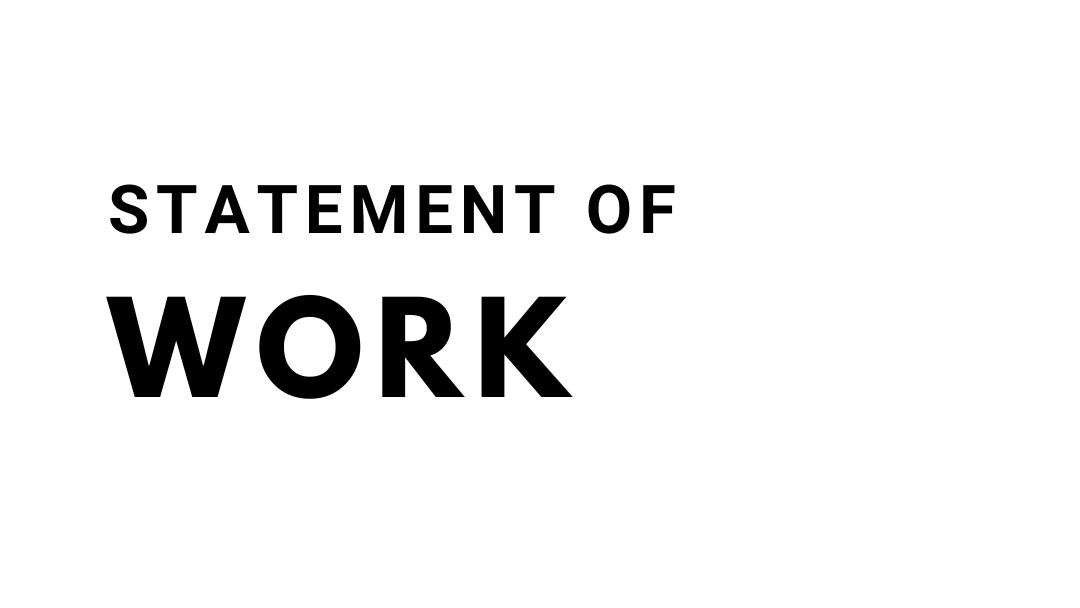Crafting a SOW: A Step-by-Step Guide

Introduction
A Statement of Work (SOW) is a pivotal tool that streamlines processes and fortifies communication. Serving as the crux of contractual agreements, an SOW underpins the key facets of a project, thereby providing a roadmap to success.
What makes an SOW indispensable, you ask? Well, a well-crafted SOW unearths the hidden layers of the project requirements, helping all stakeholders attain a common understanding. It charts out the path, setting clear expectations, and establishing a framework that ultimately minimizes risks and boosts efficiency. In this comprehensive guide, we will dissect each element of the SOW, explain their significance.
The SOW
Executive Summary
Diving into the Statement of Work, the first element that demands our attention is the executive summary. This section furnishes a high-level overview of the project. Although it is compact, it encapsulates all the critical components of the SOW, functioning as a quick reference guide for stakeholders.
Here, you need to give a snapshot of your project goals, deliverables, timelines, and key stakeholders. This concise section, while not drowning in excessive detail, still manages to provide a clear, understandable insight into the project’s essence.
Nature of Requirement
Next comes the description of the project requirement. This section elaborates on the problem or need that the project is designed to address. Here, you should identify and elaborate the objectives of the project in explicit detail, so all parties involved comprehend the project’s purpose.
Moreover, the nature of requirement must be outlined in a manner that it sets the stage for the subsequent sections, ensuring that the entire SOW remains cohesive and logical. This means you’re creating a continuous narrative that flows naturally and makes sense to the reader.
Scope of Work and RACI
In the scope of work, the project’s boundaries are demarcated. This includes specifying the tasks, activities, and processes that will be undertaken to meet the project objectives.
This section can be further enhanced with the use of a RACI (Responsible, Accountable, Consulted, Informed) matrix.
| Task/Process | Responsible | Accountable | Consulted | Informed |
|---|---|---|---|---|
| Task 1 | Team A | Manager A | Team B | Manager B |
| Task 2 | Team B | Manager A | Team A | Manager B |
Out of Scope Activities
Just as defining what is included is crucial, stating what is not included is equally important. These out-of-scope activities delineate the limitations of the project and shield it from scope creep, preserving the project’s integrity and preventing needless deviations.
Assumptions
The assumptions section lists any preconditions, scenarios, or facts that are considered as given for the project’s execution. These assumptions aid in risk mitigation and foster a realistic perspective about the project’s successful execution.
Deliverables
Your SOW should state the project’s tangible results or deliverables, marking a clear finish line for the project. It’s vital that the deliverables are measurable, specific, and agreed upon by all stakeholders.
Success Criteria
Defining success criteria provides a target to strive for and offers a clear idea of what constitutes project success. This could be specific milestones, the completion of deliverables, meeting the budget, or adhering to the timeline.
Proposed Delivery Structure
This section provides a blueprint of the intended project structure, outlining the stages of the project and corresponding timeframes. It’s a skeletal view of how the project will progress, providing direction and a timeline.
Pricing
A good SOW needs to include the pricing details for the project. Here, you can leverage value-based pricing that determines prices based on the perceived value to the customer rather than a set cost.
| Deliverable | Price ($) |
|---|---|
| Deliverable 1 | 1000 |
| Deliverable 2 | 1500 |
Stakeholders
The SOW should also define the stakeholders of the project. These are individuals or groups that have a vested interest in the project’s outcome.
| Stakeholder | Role | Interest |
|---|---|---|
| Stakeholder 1 | Manager | High |
| Stakeholder 2 | Team Member | Medium |
Term and Conditions
The terms and conditions specify the rules that the project will abide by. It ensures all stakeholders are aware of the legal and project-specific conditions in advance.
Warranty and Limited Liability
This section provides protection to both the client and the provider by stating the warranty details and any limitations of liability.
Acceptance
The final piece of the SOW puzzle is acceptance. It spells out the criteria for accepting deliverables and what procedures will be in place to handle any disputes or issues.
Example
Discover ACME Ventures LLC’s comprehensive proposal to perform third-party vendor assessments for KODIAK CORP here. This detailed Statement of Work elucidates every aspect of the proposed project, ensuring a clear path towards successful project completion.
In Conclusion
A meticulously designed Statement of Work is more than a mere document; it’s the blueprint of your project’s success. It minimizes risks, fortifies communication, and guarantees the alignment of all stakeholders, making it an indispensable tool in the realm of project management.